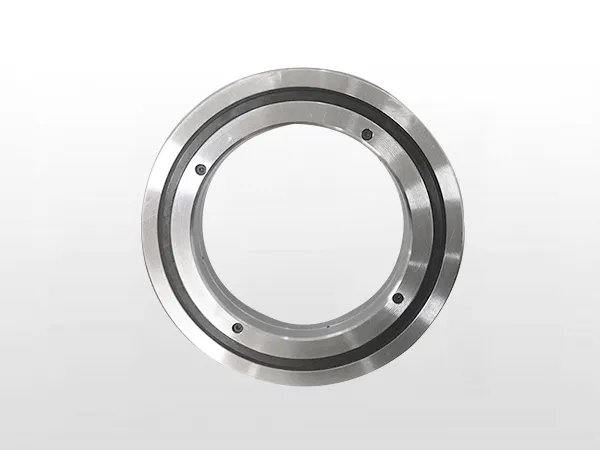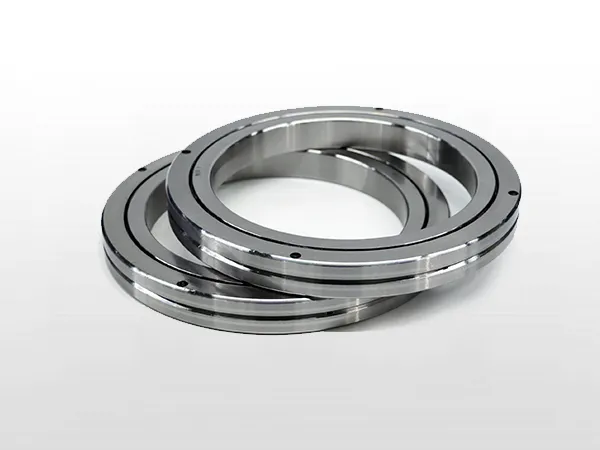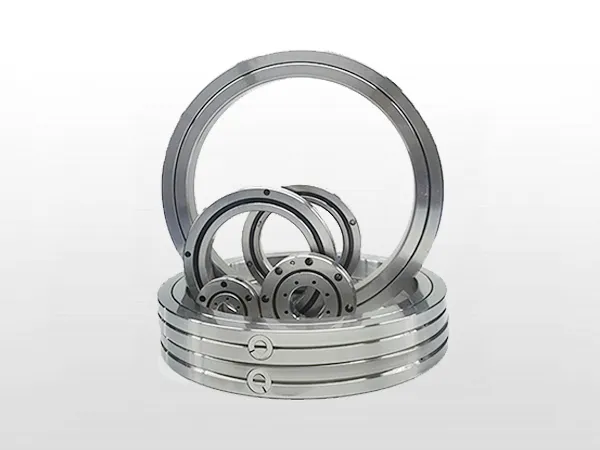
1. Make a mark
In order to improve the assembly accuracy of crossed roller bearings, clear marks should be made on the corresponding surfaces of the shaft and seat hole, and on both sides of the assembly chamfer, indicating the deviation peak value and direction. In order to align the deviations of the two matching parties in the same direction during actual assembly, the deviations of the two parties can be partially offset after assembly. The purpose of marking is that the compensation of the deviation can be considered comprehensively, so that the rotation accuracy of the bearings at both ends is improved, and the coaxiality error of the seat hole between the bearings and the journals at both ends is partially eliminated.
2. Use precision plug
Implementing surface strengthening measures on the mating surface, such as sandblasting, using a precision plug with a slightly larger diameter to plug the inner hole once, etc., are conducive to improving the mating accuracy. For large-scale bearings with large outer ring interference, in order to facilitate installation, the outer circle of the outer ring and the bearing seat hole are also made with a small taper. The amount of advancement of the ring makes the interference within a predetermined range, and the frictional resistance of the end cover end to the end face of the outer ring also helps to fix the outer ring and prevent it from creeping. This mounting method is especially convenient for vertically mounted bearings.
3. Select the appropriate amount of interference fit
According to the direction and nature of the load acting on the cross roller bearing and which side of the inner and outer rings rotates, the load borne by each ring can be divided into rotating load, static load or non-directional load. Rings that bear rotating loads and non-directional loads should be static fit (interference fit), and rings that bear static loads can be transition fit or dynamic fit (clearance fit). When the bearing load is large or subjected to vibration and impact loads, the interference must increase. When using hollow shafts, thin-walled bearing boxes, or light alloy or plastic bearing boxes, the amount of interference must also be increased. When it is required to maintain high rotation, high-precision bearings must be used, and the dimensional accuracy of the shaft and bearing box should be improved to avoid excessive interference. If the interference is too large, the geometrical accuracy of the shaft or bearing housing may affect the geometrical shape of the bearing ring, thereby compromising the rotational accuracy of the bearing.
After understanding how to improve the assembly accuracy of cross roller bearings, we also need to know how to measure cross roller bearings. In order to better grasp the method of improving the assembly accuracy of crossed roller bearings.

Before measuring cross roller bearings, it must be clear that the measurement tools for cross roller bearings cannot use measurement methods and measurement tools that will deform the bearings.
1. Select the measurement location
Before the measurement, the bearing should be assembled according to the regulations and the bearing cover bolts should be tightened according to the specified torque. Use the inner diameter gauge to check the reference size on the outer diameter micrometer and then measure. Avoid the thinning area when measuring. The difference between the inner diameter of the bearing and the outer diameter of the corresponding journal is the fit clearance.
2. Bearing thickness
The fixed measuring head of the outer micrometer is changed from a plane to a spherical surface, which can be used to measure the thickness of the bearing. The thickness of the bearing should generally be controlled within the range of 0.005~0.010 mm, otherwise the inner diameter of the bearing will be out of tolerance. The bearing has a slight thinning near the opening, so attention should be paid to it when measuring.

3. The coaxiality of the inner hole of the main bearing
The coaxiality error of the inner hole of the bearing is mainly caused by the coaxiality error of the bearing hole, and the cause of the coaxiality error of the bearing hole is the deformation of the cylinder block. When the radial runout of the main journal is within the specified tolerance, check the engagement marks of the main journal and bearings. If the position of the engagement marks of each main bearing is obviously inconsistent, it means that the coaxiality error is large, and scraping, boring bearings or Replace the cylinder block and other solutions, otherwise it is difficult to ensure the normal operation of the engine.
Improving the assembly accuracy of cross roller bearings can make the bearings better meet the precision rotary table, large hobbing machines, robot bearings and other mechanical devices that have strict requirements on bearing accuracy.
